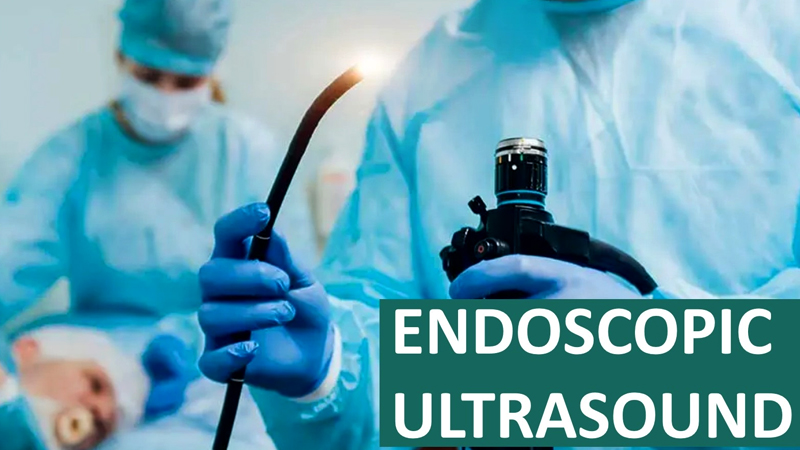
EUS
Endoscopic ultrasound (EUS) is a specialized medical procedure that combines endoscopy and ultrasound imaging techniques to examine and evaluate various organs and structures within the gastrointestinal tract. It involves the use of an endoscope equipped with a small ultrasound probe at its tip.
During an EUS procedure, the endoscope is inserted through the mouth or rectum and guided into the esophagus, stomach, or rectum, depending on the area being examined. The ultrasound probe emits high-frequency sound waves that create detailed images of the surrounding organs and tissues, including the walls of the digestive tract, nearby lymph nodes, and surrounding blood vessels.
EUS is commonly used for several purposes, including:
1. Diagnosis and staging of gastrointestinal cancers: EUS can provide detailed images of tumors in the gastrointestinal tract and help determine the extent of cancer spread (staging).
2. Evaluation of pancreatic and biliary diseases: EUS is often used to assess abnormalities in the pancreas, such as tumors, cysts, or inflammation, as well as to evaluate the bile ducts and gallbladder.
3. Evaluation of submucosal lesions: EUS can help differentiate between benign and malignant submucosal lesions (growths beneath the inner lining of the digestive tract) and guide treatment decisions.
4. Evaluation of mediastinal and retroperitoneal structures: EUS can visualize structures in the chest (mediastinum) and abdomen (retroperitoneum) that are difficult to assess with other imaging techniques.
EUS is typically performed under sedation to make the patient more comfortable. It is considered a safe and effective procedure, but like any medical procedure, it carries some risks, such as perforation of the gastrointestinal tract, bleeding, or infection. However, the benefits of EUS in diagnosing and managing various gastrointestinal conditions often outweigh the risks, especially when performed by experienced healthcare providers.
